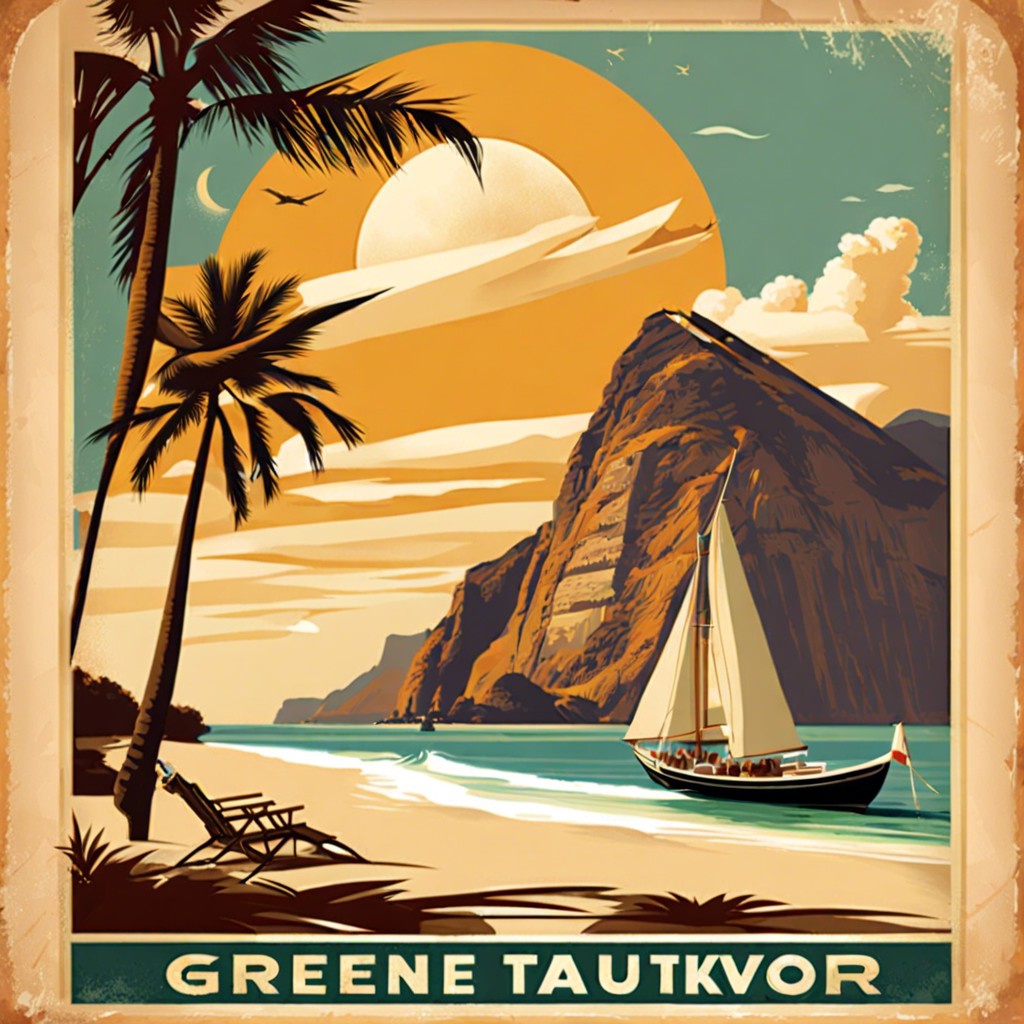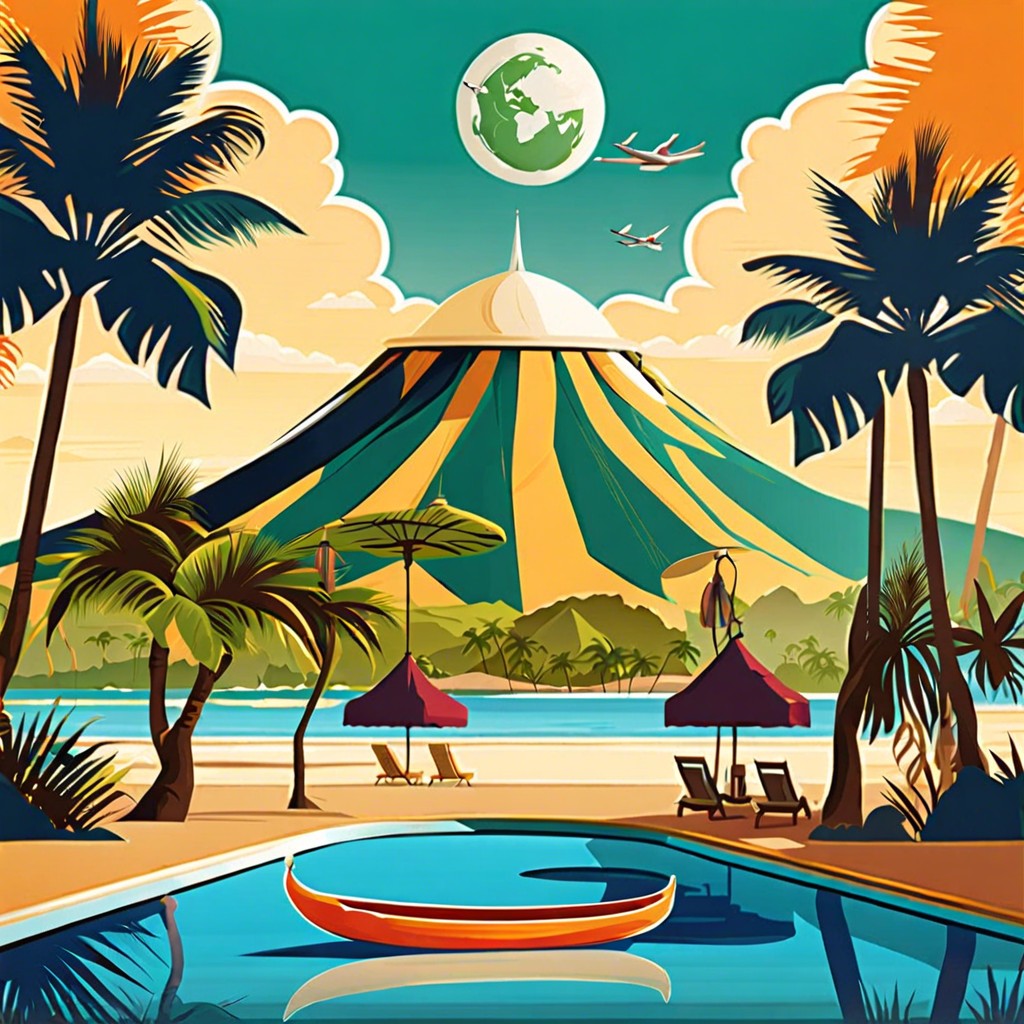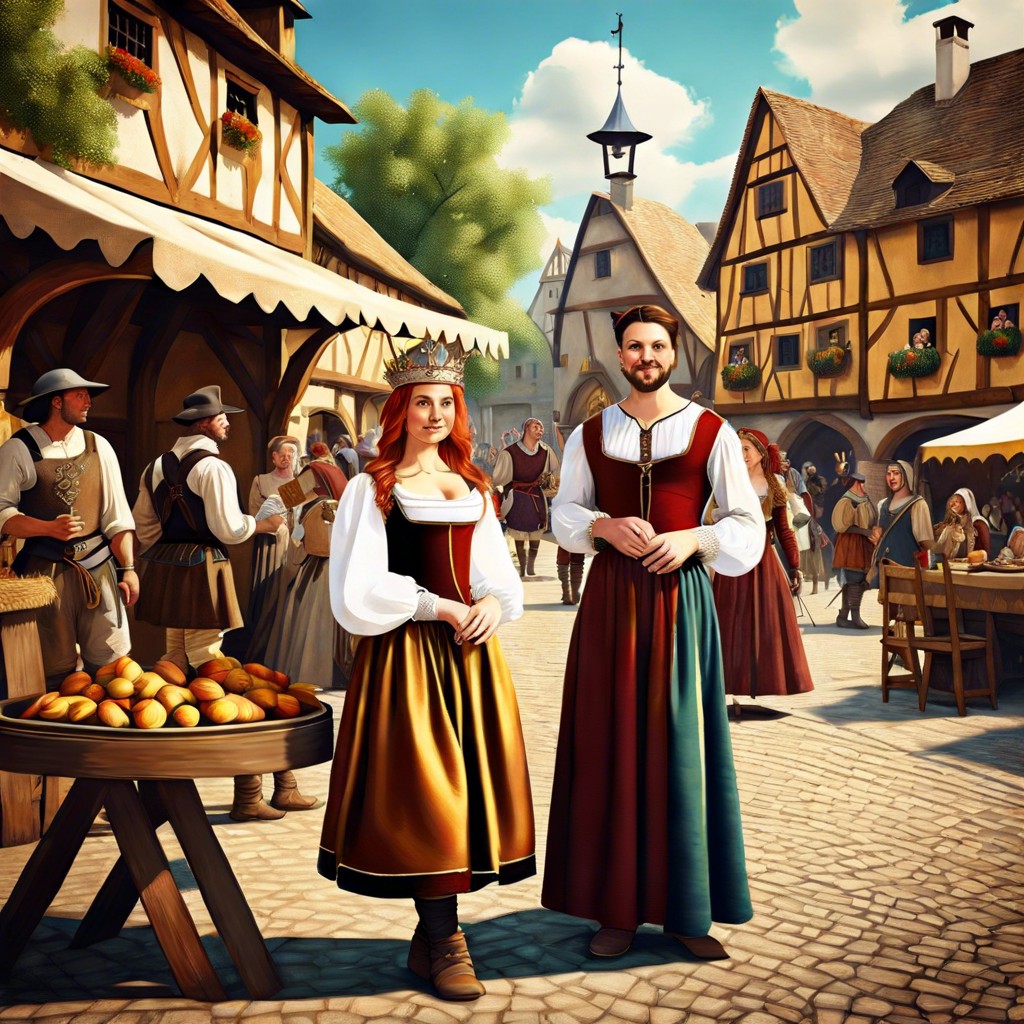Last updated on
Discover the allure of vintage travel posters and their impact on the allure of yesteryear’s destinations.
Key takeaways:
- Vintage travel posters serve as historical documents of the advent of tourism.
- The aesthetic and design of vintage travel posters evolved over time.
- Travel posters offer insights into the cultural and societal attitudes of past eras.
- Vintage travel posters have significant collectible value in the market.
- Noteworthy artists like Roger Broders and David Klein shaped the world of vintage travel posters.
Historical Significance of Vintage Travel Posters

Picture this: the early 20th century, a time when commercial air travel was just spreading its wings. Vintage travel posters were more than mere advertisements; they serve as historical documents reflecting the advent of tourism and the democratization of travel.
The artwork captured the zeitgeist of an era, showcasing now-iconic destinations at a time when distant travel was an aspiration for many. Each poster from London’s Big Ben to the pyramids of Egypt depicted the dreams of a generation eager to explore.
They also reflect the technological advances of the time, such as the luxurious ocean liners and groundbreaking aircraft. As travel methods transformed, so did the imagery on the posters, encouraging adventurous spirits to embark on journeys far from home.
Additionally, these posters offer a glimpse into the social climate and attitudes towards travel, often revealing gender roles, leisure activities, and contemporary fashion.
Beyond mere nostalgia, they thus forge a connection between the traveler of today and the explorers of yesteryear, underlining the evolution of modern tourism.
Aesthetic and Design Evolution Over Time

The early 20th century’s vintage travel posters are like a time machine, reflecting the allure and glamour of travel during their respective eras. Initially, bold text and simple imagery dominated, aimed at capturing attention with sheer clarity. As luxury travel burgeoned, posters shifted towards more intricate designs, showcasing exotic locales with lush, inviting scenes that spoke to the escapism of the prospective traveler.
Art Deco’s influence during the 1920s and 1930s introduced geometric shapes and elegant lines, indicating speed and movement. This was the era of the ocean liner and the locomotive; travel was not just a means to an end but an experience laden with style and panache.
The Mid-Century Modern period in the 1950s and 1960s brought a radical shift with its emphasis on simplicity, splashes of vibrant color, and abstract concepts. This was the dawn of the jet age, and posters of this time encapsulated the swift and thrilling new way to traverse the globe.
From bold and simple to sophisticated and sleek, advancements in printing techniques and graphic design played a crucial role. Lithography allowed for richer colors and intricate details, while photomontage techniques in later eras blended photography and art for a more realistic portrayal of destinations.
These visual shifts were not merely cosmetic—they aligned with changes in society, technology, and the way people traveled, embodying the spirit of each age.
Promotional Messages and Cultural Insights

Travel posters from bygone eras serve as windows into the attitudes and values of past societies. They often reflected the zeitgeist, capturing the allure of new destinations and the glamour of journeying to far-off places. These advertisements did more than just market holiday spots; they swayed public perception and cultivated a sense of adventure during times when travel was blossoming.
The imagery and slogans used in these posters were typically loaded with symbolism and idealism. Azure oceans, majestic landscapes, and sophisticated travelers conveyed escapism and the promise of the exotic or the serene, tapping into the collective desire for discovery and leisure.
As portals to vanished eras, these posters provide context to historical events and trends. They can reveal how tourism was influenced by advancements like the advent of commercial air travel or the expansion of rail networks. Furthermore, examination of changes in the portrayal of destinations and people over time allows insight into societal shifts, such as changing attitudes towards colonialism or the emergence of environmental consciousness.
Collectors and historians alike treasure these artifacts, analyzing them to dissect the cultural narratives and national identities that were marketed to prospective travelers of the era. They hold significance not only as works of art but as anthropological artifacts that capture the spirit of their time.
Collectible Value and Market Trends

Vintage travel posters can transform a wall from drab to fab, adding a splash of yesteryear to any room. However, these vibrant windows into the past do more than just brighten up a space; they carry significant collectible value, with a market that’s as dynamic as a bustling airport terminal.
Understanding the market hinges on several factors. Rarity drives up the value; a poster with limited prints or one from an iconic event like the 1924 Paris Olympics could fetch a pretty penny. Condition is king. Faded colors or frayed edges can slash a poster’s value, whereas one in pristine condition could rival the cost of a round-the-world ticket.
Then there’s the nostalgia factor. Posters depicting glamorous jet-set destinations of the golden age of travel often have a higher appeal due to their retro charm and historical importance. The allure of the past can be as potent as the lure of the open road.
It’s also wise to keep an eye on the trends. Interest in certain periods, such as Art Deco, waxes and wanes. Right now, mid-century modern is having its day in the sun, much like the sun-soaked Riviera it often portrays.
Finally, keep track of the heavy hitters in the artist world. A poster touched by the hand of a master like Cassandre or David Klein can attract art connoisseurs and travel buffs alike, often leading to a bidding war at auctions.
Collecting these posters is more than a pastime—it’s a journey through history, art, and the evolution of travel, with a potential treasure map leading to valuable finds.
Noteworthy Artists and Designers

The pantheon of vintage poster art features luminaries like Roger Broders, whose sun-drenched vistas and chic leisure scenes epitomized the allure of early 20th-century French travel. Similarly, David Klein, with his vibrant TWA airline posters, reshaped American visual culture, injecting mid-century modern style into the popular consciousness.
On the far side of the Atlantic, and equally celebrated, was A.M. Cassandre, whose work straddled Art Deco flair and modernist simplicity, marrying typography and image to sell destinations as diverse as ocean liners and the spirited streets of Paris.
These artists, among others, elevated advertising to art. Moreover, their contributions inform current graphic design, revealing the practical interplay of typography, color, and composition in creating compelling imagery.
Their works, once tools for commerce, now serve as entry points to the past, narrating stories of eras where steamships ruled and air travel was a glitzy novelty. Celebrated in exhibitions and prized in auctions, these creators’ legacies transcend mere promotional material, affirming the potent blend of commerce, culture, and art.




